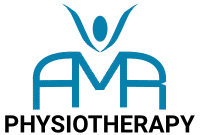Comprehensive Guide to Managing Knee Osteoarthritis
Knee osteoarthritis (OA) is a common condition that can lead to pain and decreased mobility. This guide will help you understand how to identify knee osteoarthritis, explore effective exercises, and outline additional steps if these methods aren’t sufficient.
How to Identify Knee Osteoarthritis
Knee osteoarthritis can be identified through a simple self-test: press on the joint line where the tibia and femur meet. If you experience pain on either side, it may indicate OA. However, the most accurate diagnosis comes from an x-ray, which assesses the severity of knee osteoarthritis, ranging from early to severe stages.
Keep in mind that x-rays may not provide the full picture. Some people with OA visible on x-rays might experience symptoms from other issues such as ligament injuries or meniscus tears, especially if symptoms began after an injury. A thorough evaluation by a healthcare professional is essential to rule out other conditions.
Effective Exercises for Knee Osteoarthritis
Incorporating specific exercises into your routine can help manage knee osteoarthritis by strengthening the surrounding muscles and improving joint function. Here are some of the top exercises:
- Heel Slides: Begin with your heel in a comfortable position. Slide your heel back as far as possible without forcing it, then slowly return to the starting position. This exercise helps to keep the joint moving and promotes lubrication from synovial fluid.
- Inner Range Quads: Place a towel or pillow under your knee and straighten your leg to engage the quadriceps muscle. This low-impact exercise is effective for strengthening the leg without causing additional pain.
- Sit-to-Stand: This exercise strengthens your legs and enhances joint movement. Start from a high surface, like a bed, and progress to a lower chair as you build strength. Ensure that this exercise does not exacerbate your knee pain.
- Bridging: Lie on your back and lift your hips by contracting your glutes. Hold the position briefly at the top, then lower slowly. If the floor is too difficult, perform this exercise on a bed.
- Active Straight Leg Raise: Building on the inner range quads exercise, keep your leg straight, engage your quad, and lift it to a 45-degree angle. Hold briefly and then lower it slowly. This exercise progresses to strengthen the leg muscles further.
These exercises focus on strengthening the quadriceps and other leg muscles, which can help alleviate knee osteoarthritis symptoms. Combine these exercises with activity modification by pacing your daily activities. If you experience increased pain the following day, it may indicate overexertion.
Additional Steps if Exercises Aren’t Enough
If you find that exercises and activity modifications aren’t providing sufficient relief, consider the following options:
- Continue Noninvasive Treatments: Persist with exercises and activity modifications. They may take time to be effective but are crucial for maintaining leg strength and overall fitness.
- Steroid Injections: These can provide temporary pain relief, making it easier to continue with your exercise routine. However, steroid injections do not cure knee osteoarthritis.
- Surgical Options: For moderate to severe knee osteoarthritis or if your quality of life is significantly affected, knee replacement surgery may be necessary. This can be a partial or total replacement. While surgery can improve quality of life, it involves risks and potential for ongoing pain. Strengthening exercises before and after surgery are essential for optimal recovery.
Additional Resources for Knee Osteoarthritis
If you are struggling with knee pain and need a consultation, you could find us in Nottingham. You could give us a call on 0115 901 7867 or use our online booking system. We are based in Nottingham



